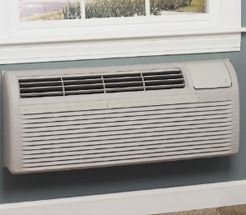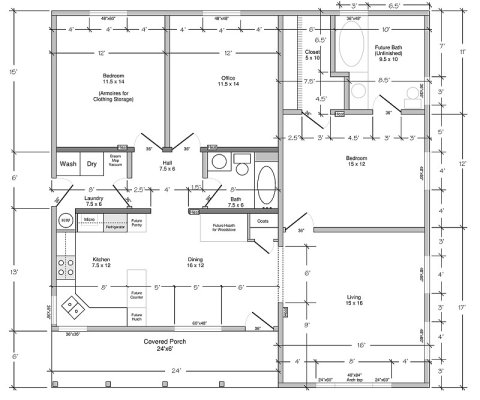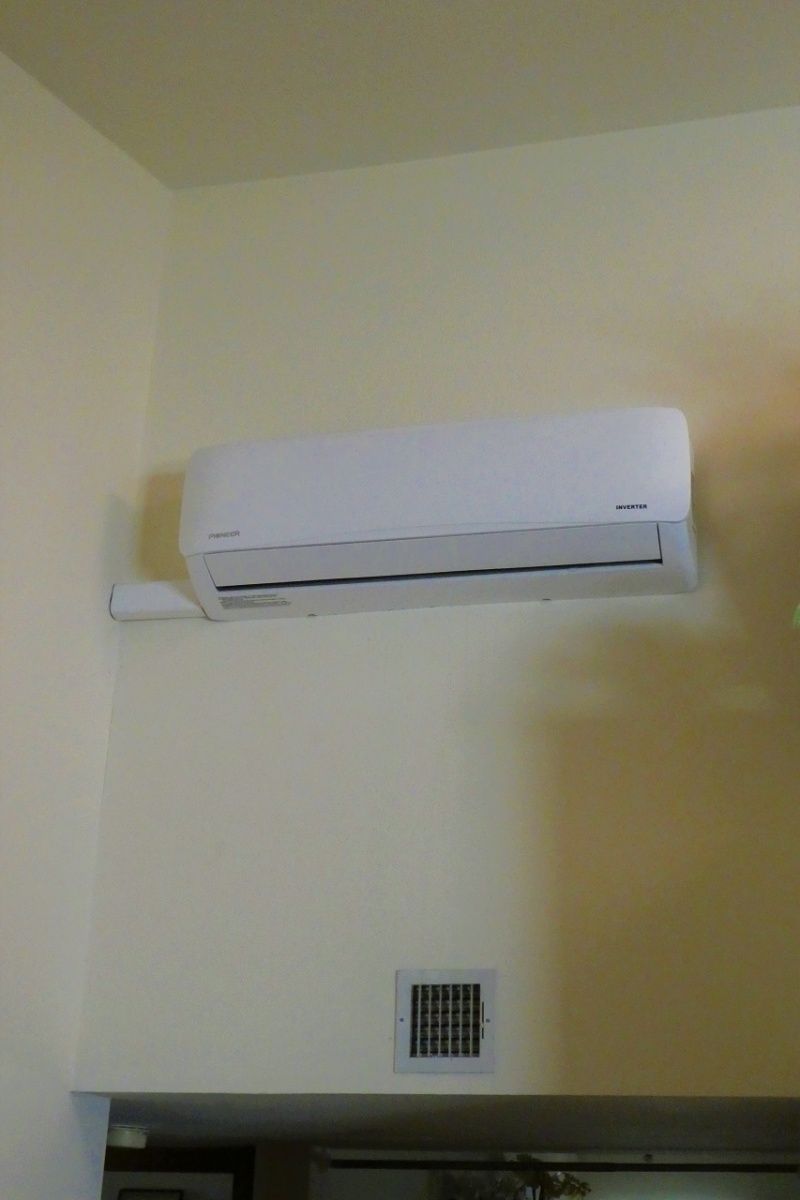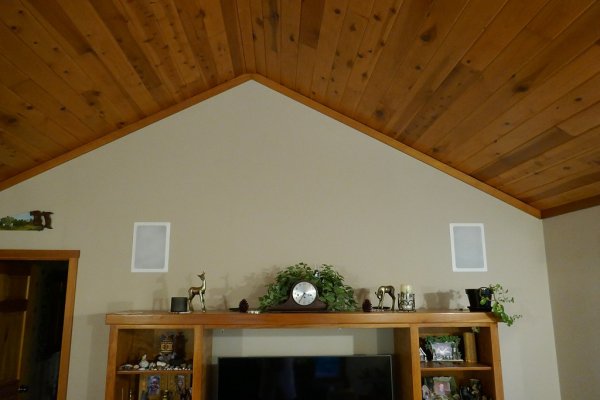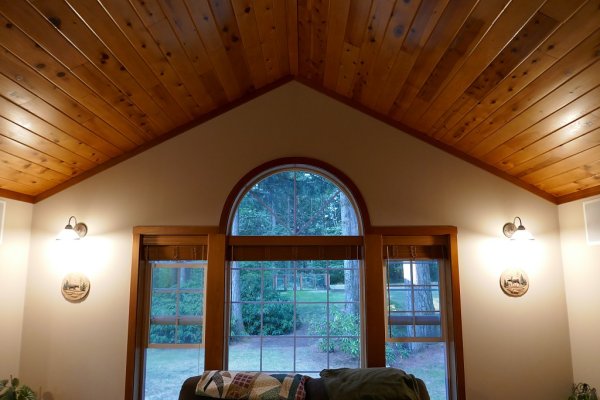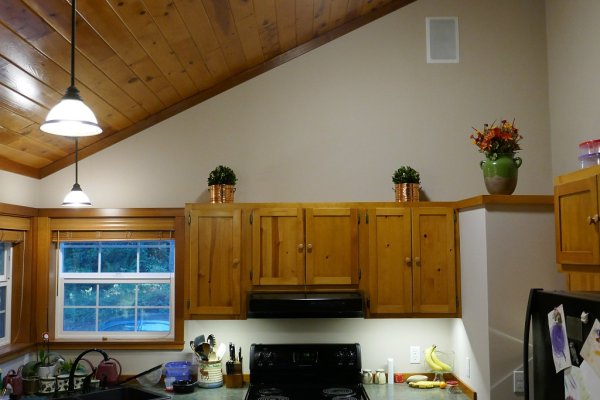if the wall between the living room and the master bedroom is a high wall, a unit can be mounted there, a couple of feet from the exterior wall.
That wouldn't really work well in our case. The lower "flat" part of our living room wall is taken up with our entertainment center, and in-wall speakers. While there is available space up in the gable area, running the line sets would be difficult without major work or an ugly appearance.
The opposite outside wall also wouldn't work well because of our windows. While I could technically mount one above the window, I don't want to see the line sets running down the outside front wall of our house.
Also, neither location would be good for access to clean filters or whatnot. So no-go in the living room.
I don't really want a unit in our bedroom, but the wall that backs up with the living room wouldn't work anyway because we have a smoke alarm installed there. The opposite bedroom wall also has in-wall speakers. So no-go in the master bedroom.
The best location I can find is above the cabinets in the kitchen. It's on an outside wall, there's no pipes/wires in the wall up there, it would blow air towards the dining and living room, and the line set could run right down the wall to the outside unit. It would still put the outside unit in a rather visible location when we drive up, and it could potentially be vulnerable to someone backing into it with a car. I think I could shift it back far enough to minimize that, but there are minor other issues to consider.
In theory, I could install a "concealed" mini-split in our attic room with short ducts to each room. There's plenty of space in the attic room, and it's inside our conditioned air space (below the insulation). Unfortunately, that gets more complicated and expensive than I want to do. We've lived 30+ years up here without AC, so it's not a huge priority.
I'll try the portable unit when it arrives next week to see how it does. It that doesn't work out I'll reconsider the mini-split in the kitchen. Otherwise, we'll just do without like we always have. We typically only get a few days each year that are hot enough we wished for AC. This year has just been exceptionally hot and dry.

